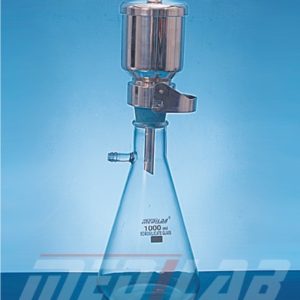Description
A Petri dish is also known as a Petri plate. These are shallow transparent cylindrical containers with a transparent lid, most commonly used by micro-biologists for culture cells, like bacteria, fungi, or small mosses. Thus, it is also known as a cell-culture dish. It is one of the most common items in biology laboratories.
It is named after its inventor, the German bacteriologist Julius Richard Petri.
Petri Dish has its uses in various laboratory applications in labs for Botany & Agriculture, Entomology, and Chemistry.
Petri Plates are made up of either borosilicate 3.3 glass or plastics like polystyrene or polycarbonate.
MEDILAB Petri Dishes come in a variety of sizes, this particular culture dish is manufactured from Borosilicate Glass 3.3, which is resistant to heat and chemical attacks. It provides excellent transparency for conducting cell cultures, sample storage, and display, solvent evaporation, insect behavioral study, plant germination, etc. These can also be offered with a heavy wall depending on their uses in the laboratory.







